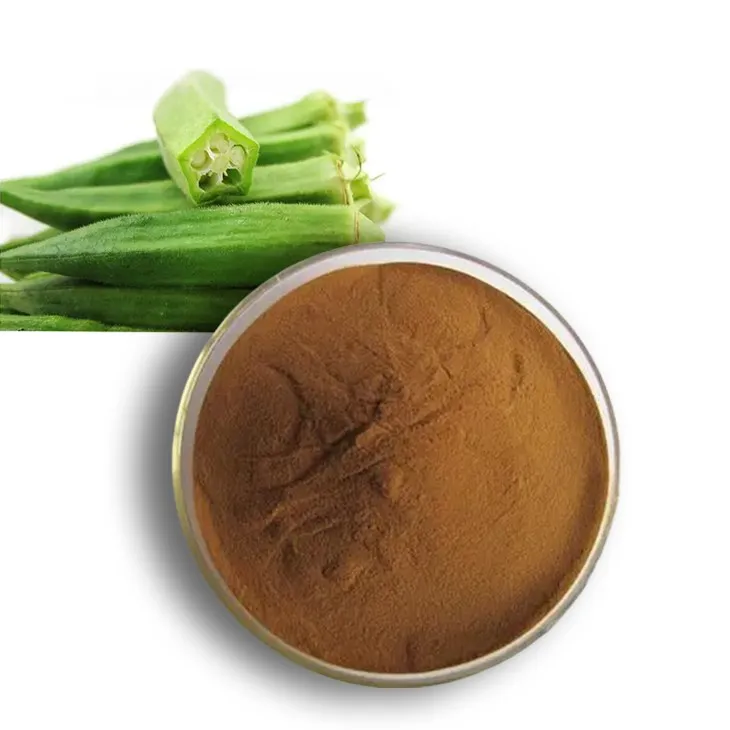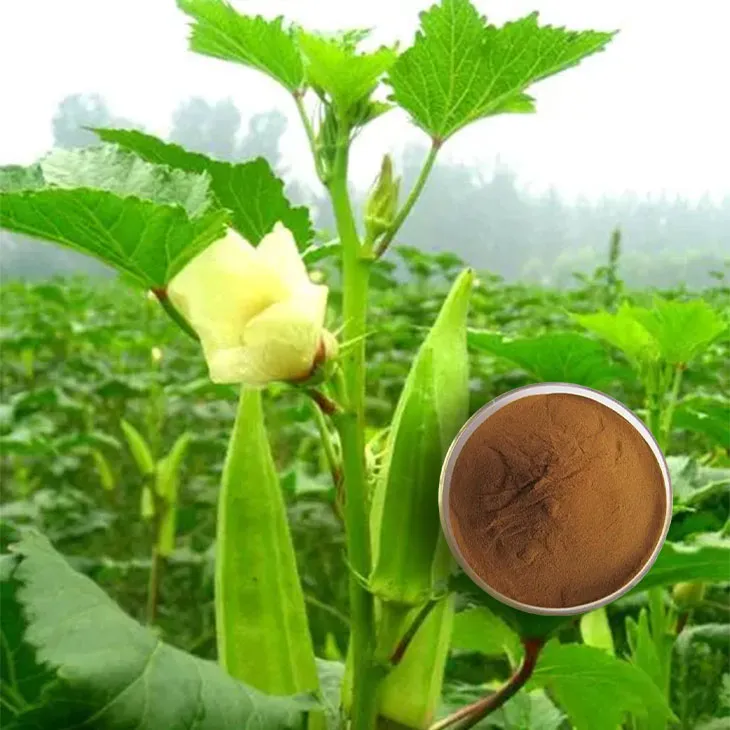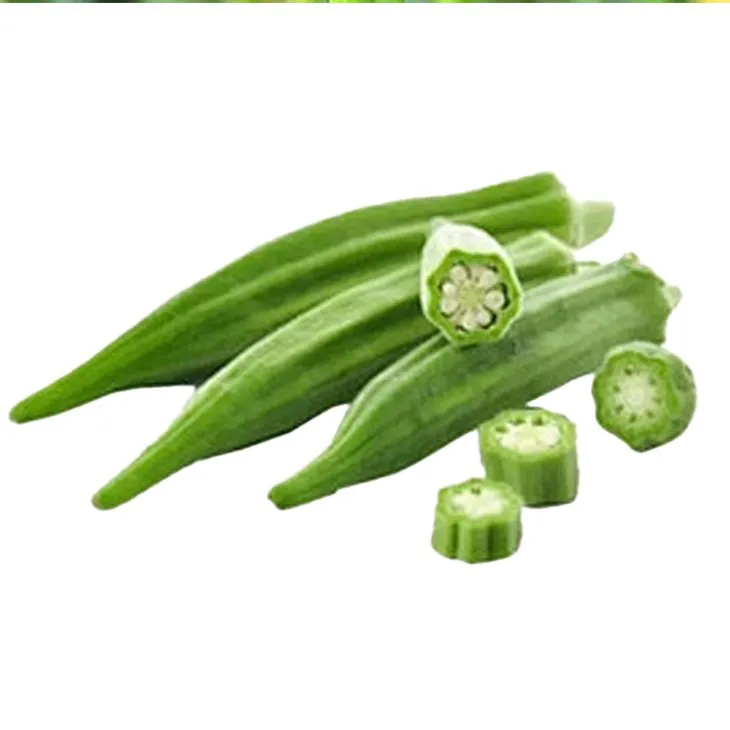- 0086-571-85302990
- sales@greenskybio.com
The best method for extracting okra extract.
2024-11-28

1. Introduction
Okra, a popular vegetable known for its various health benefits, has been increasingly studied for its extract. The Okra Extract contains a variety of bioactive compounds such as polysaccharides, flavonoids, and phenolic compounds. Extracting these valuable components effectively and maintaining their purity and effectiveness is crucial for different applications, including in the food, pharmaceutical, and cosmetic industries.

2. Traditional extraction methods
2.1 Maceration
Maceration is one of the simplest traditional extraction methods. In this process, the okra is usually chopped or ground into small pieces and then soaked in a solvent (such as ethanol or water) for a certain period, usually several hours to days. - Advantages:
- It requires relatively simple equipment, just a container for soaking.
- It can be carried out at room temperature, which is energy - efficient.
- The extraction time is relatively long, which may lead to the degradation of some active components.
- The extraction efficiency is relatively low, and not all the desired compounds can be fully extracted.
2.2 Decoction
Decoction involves boiling the okra in water for a certain period. - Advantages:
- It is a common method that has been used for a long time, and people are familiar with it.
- It can effectively extract water - soluble components.
- Some heat - sensitive components may be destroyed during the boiling process.
- The resulting extract may have a relatively complex composition due to the high - temperature treatment, which may require further purification.

3. Modern extraction technologies
3.1 Supercritical fluid extraction (SFE)
Supercritical fluid extraction (SFE) uses a supercritical fluid, usually carbon dioxide (CO₂), as the solvent. The supercritical CO₂ has properties between a gas and a liquid, which allows it to penetrate the okra matrix effectively and dissolve the target compounds. - Advantages:
- It is a clean extraction method as CO₂ is non - toxic, non - flammable, and leaves no residue in the extract.
- The extraction can be carried out at relatively low temperatures, which helps to preserve the heat - sensitive components.
- It has high selectivity, meaning it can target specific compounds more precisely.
- The equipment for SFE is relatively expensive, which may limit its widespread use in small - scale operations.
- The operation requires specialized knowledge and skills.
3.2 Ultrasonic - assisted extraction (UAE)
Ultrasonic - assisted extraction (UAE) utilizes ultrasonic waves to enhance the extraction process. The ultrasonic waves create cavitation bubbles in the solvent, which collapse and generate intense local pressure and temperature changes. These effects help to break the cell walls of the okra and release the intracellular components into the solvent more effectively. - Advantages:
- It significantly reduces the extraction time compared to traditional methods.
- The extraction efficiency is relatively high, as it can better disrupt the plant cells.
- It can be used with a variety of solvents, providing flexibility in the extraction process.
- The ultrasonic equipment may also be relatively costly, especially for high - power and large - scale applications.
- Over - exposure to ultrasonic waves may cause some degradation of the active components in some cases.
3.3 Microwave - assisted extraction (MAE)
Microwave - assisted extraction (MAE) uses microwaves to heat the solvent and the okra sample rapidly. The microwaves cause the molecules in the sample to vibrate, generating heat internally. This internal heating mechanism can accelerate the extraction process. - Advantages:
- It is very fast, usually taking only a few minutes to complete the extraction.
- It can achieve high extraction yields in a short time.
- There is a risk of overheating, which may damage the heat - sensitive components if not properly controlled.
- The equipment also requires some investment, and there may be some safety concerns related to microwave use.

4. Ensuring the purity and effectiveness of the extracts
4.1 Purification steps
After the extraction, purification steps are often necessary to ensure the purity of the Okra Extract. - Filtration: Filtration is a basic step to remove solid particles from the extract. This can be done using filter papers, membranes, or filtration devices. It helps to obtain a clear extract and prevent clogging in subsequent steps. - Centrifugation: Centrifugation can be used to separate the heavier particles or impurities from the extract. By spinning the sample at high speeds, the denser components are forced to the bottom of the centrifuge tube, leaving a relatively pure supernatant. - Chromatographic techniques: Chromatography, such as high - performance liquid chromatography (HPLC) or gas chromatography (GC), can be used for further purification and separation of the components in the extract. These techniques can separate different compounds based on their chemical properties, such as polarity or molecular weight, and help to isolate the desired bioactive components with high purity.
4.2 Quality control
Quality control is essential to ensure the effectiveness of the Okra Extract. - Analysis of active components: The content of bioactive components, such as polysaccharides, flavonoids, and phenolic compounds, should be analyzed. This can be done using spectroscopic methods, such as ultraviolet - visible spectroscopy (UV - Vis), infrared spectroscopy (IR), or more advanced techniques like nuclear magnetic resonance (NMR). By determining the concentration of these active components, the quality and effectiveness of the extract can be evaluated. - Biological activity assays: In - vitro or in - vivo biological activity assays can be carried out to test the effectiveness of the extract. For example, antioxidant activity can be measured using assays like DPPH (2, 2 - diphenyl - 1 - picrylhydrazyl) radical scavenging assay. Anti - inflammatory activity can be evaluated using cell - based assays or animal models. These assays help to confirm that the extract has the expected biological activities and is suitable for its intended applications.
5. Conclusion
There are various methods for extracting okra extract, each with its own advantages and disadvantages. Traditional methods like maceration and decoction are simple but may have lower extraction efficiency and potential for component degradation. Modern technologies such as supercritical fluid extraction, ultrasonic - assisted extraction, and microwave - assisted extraction offer higher efficiency and better preservation of active components, but they may require more expensive equipment and specialized knowledge. To ensure the purity and effectiveness of the extract, purification steps and quality control measures are necessary. The choice of the best extraction method depends on various factors, including the scale of production, the target components, and the available resources. By carefully considering these factors, one can select the most suitable method for extracting okra extract to meet different application requirements.
FAQ:
What are the modern extraction technologies for okra extract?
Modern extraction technologies for okra extract include supercritical fluid extraction (SFE). SFE uses supercritical carbon dioxide as a solvent. It has the advantage of being able to operate at relatively low temperatures, which helps preserve the bioactive compounds in okra. Another method is microwave - assisted extraction (MAE). MAE uses microwaves to heat the sample and solvent mixture, which can significantly reduce extraction time compared to traditional methods. There is also ultrasonic - assisted extraction (UAE), where ultrasonic waves are applied to the extraction system. This causes cavitation, which enhances mass transfer and extraction efficiency.
What are the traditional methods of extracting okra extract?
Traditional methods of extracting okra extract include solvent extraction. For example, using ethanol or methanol as solvents. This method is relatively simple and cost - effective. Another traditional method is maceration, where okra is soaked in a solvent for a long period, usually several days to weeks. However, traditional methods often take longer time and may require more solvent compared to modern extraction technologies.
What are the advantages of modern extraction technologies over traditional methods in extracting okra extract?
Modern extraction technologies generally have several advantages over traditional methods. Firstly, they are often more time - efficient. For example, microwave - assisted extraction and ultrasonic - assisted extraction can significantly reduce the extraction time. Secondly, they can be more precise in targeting specific compounds. Supercritical fluid extraction can be adjusted to selectively extract certain bioactive components. Thirdly, modern methods may use less solvent, which is more environmentally friendly and can also reduce the cost associated with solvent purchase and disposal.
How can we ensure the purity of okra extract?
To ensure the purity of okra extract, proper purification steps should be followed after extraction. One common method is chromatography, such as high - performance liquid chromatography (HPLC). HPLC can separate different components in the extract based on their chemical properties. Another approach is filtration, using filters with appropriate pore sizes to remove impurities. Additionally, strict quality control during the entire extraction and purification process is essential, including accurate measurement of raw materials, proper handling of solvents, and regular calibration of equipment.
How can we ensure the effectiveness of okra extract?
To ensure the effectiveness of okra extract, first, it is crucial to start with high - quality okra raw materials. This means selecting fresh, unspoiled okra. Second, during the extraction process, appropriate extraction conditions should be maintained to preserve the bioactive compounds. For example, if heat - sensitive compounds are present, using a low - temperature extraction method like supercritical fluid extraction. Third, proper storage of the extract is necessary. It should be stored in a cool, dry place, away from light and oxygen to prevent degradation of the active components.
Related literature
- Advanced Extraction Technologies for Plant - Based Extracts: A Review"
- "Traditional and Modern Extraction Methods of Bioactive Compounds from Vegetables"
- "Ensuring Purity and Efficacy in Natural Extracts: Strategies and Case Studies"
- ▶ Hesperidin
- ▶ citrus bioflavonoids
- ▶ plant extract
- ▶ lycopene
- ▶ Diosmin
- ▶ Grape seed extract
- ▶ Sea buckthorn Juice Powder
- ▶ Beetroot powder
- ▶ Hops Extract
- ▶ Artichoke Extract
- ▶ Reishi mushroom extract
- ▶ Astaxanthin
- ▶ Green Tea Extract
- ▶ Curcumin Extract
- ▶ Horse Chestnut Extract
- ▶ Other Problems
- ▶ Boswellia Serrata Extract
- ▶ Resveratrol Extract
- ▶ Marigold Extract
- ▶ Grape Leaf Extract
- ▶ blog3
- ▶ blog4
-
Chinese Ginger Extract Powder Suppliers.
2024-11-28
-
Organic non - transgenic black rice extract.
2024-11-28
-
High - quality Chasteberry Extract Products.
2024-11-28
-
China's banana juice powder suppliers.
2024-11-28
-
Bulk purchase of cranberry extract.
2024-11-28
-
Lemon Juice Powder
2024-11-28
-
Curcuma Longa Extract
2024-11-28
-
Passionflower Extract
2024-11-28
-
Dandelion Leaf Extract
2024-11-28
-
Clove Powder
2024-11-28
-
Pine bark Extract Powder
2024-11-28
-
Baicalin
2024-11-28
-
Oyster Mushroom Extract Powder
2024-11-28
-
Sophora Flavescens Root Extract
2024-11-28
-
Curcumin
2024-11-28





















